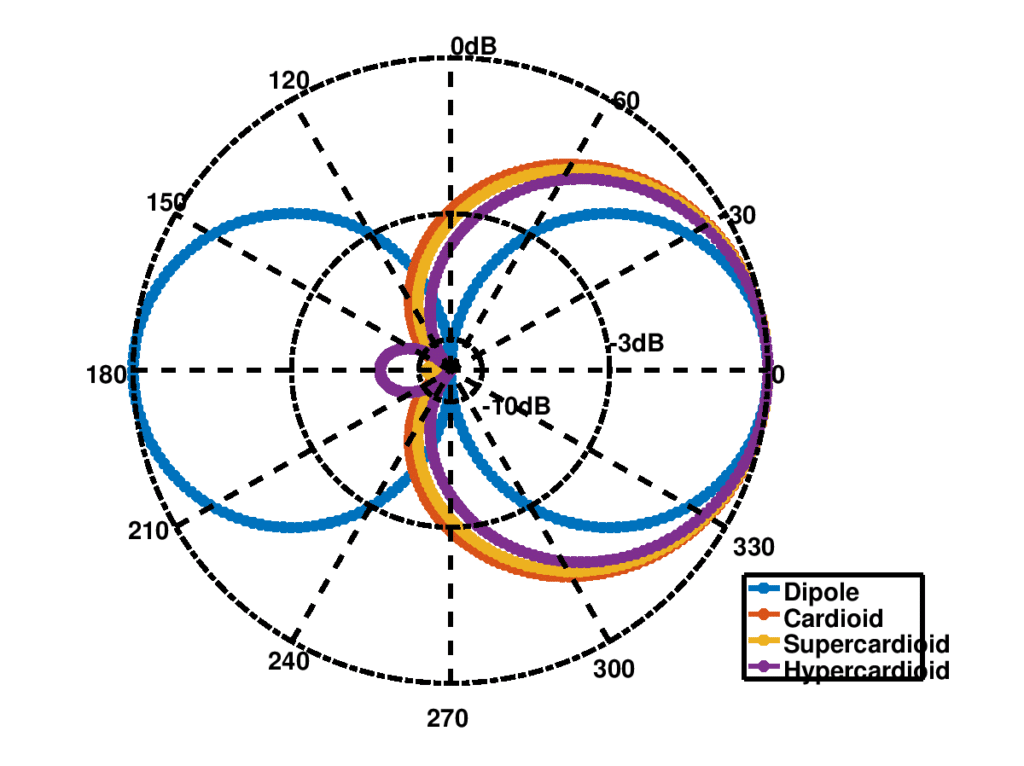Conventional delay and sum beamformers are additive in nature. Another approach to forming a super directive beam in a specific direction is by the use of differential beamformers, distinctive from additive beamforming. The number of microphones available limits the order of the differential microphone array (DMA) beamforming. For N microphones, an N-1 order differential microphone beamforming is realized. Thus, for a first order DMA beamforming, two microphones are required. An advantage of using DMA beamforming is that the amplitude response tends to be flat.
Consider a two microphones array as shown in Figure 1:
Figure 1: Two microphone array
The DMA beamforming is an optimization problem to meet constraints for N microphones. For two microphones, the constrainst are:
and
where is the desired beam direction and
is a desired null direction. Given
, the choice of
will determine whether the spatial beam will be a dipole, cardiod, hypercardiod or supercardiod. Figure 2 below illustrates these 4 spatial beams.
Figure 2: Different spatial patterns
VOCAL Technologies offers custom designed solutions for beamforming with a robust voice activity detector, acoustic echo cancellation and noise suppression. Our custom implementations of such systems are meant to deliver optimum performance for your specific beamforming task. Contact us today to discuss your solution!

